 |
||||||||||||||||||||||||
 |
 |
|||||||||||||||||||||||
 |
||||||||||||||||||||||||
 |
 |
 |
 |
|||||||||||||||||||||
| 2015 CIRCLES | 2014 CIRCLES | 2013 CIRCLES | 2012 CIRCLES | |||||||||||||||||||||
|
||||||||||||||||||||||||
 |
 |
|||||||||||||||||||||||

|
Ground Report – Waylands Smithy, Oxfordshire, 16/08/05This is a complex crop circle positioned adjacent to Waylands Smithy Long Barrow. This location lies on the top of a hill, meaning it cannot be seen from anywhere except above. I do always mention the fact that crop circles are often located in what appears to be carefully ‘considered’ spots, beautiful, secluded etc. and this is no exception! With the long barrow and surrounding trees as a backdrop on two sides of the field, and the stunning Oxfordshire countryside on the other two, this has got to be one of the best settings of the year. 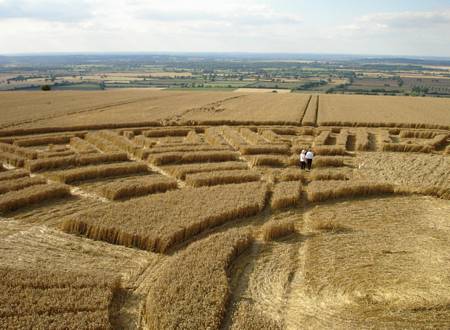
The design of the formation is reminiscent of the one that appeared towards the end of last season next to Silbury Hill. Some of the elements within seem to follow a similar theme, although none are exactly the same. There is a crescent at the centre which is similar to a feature of the much smaller Silbury Hill formation of this year, which appeared in the same field. 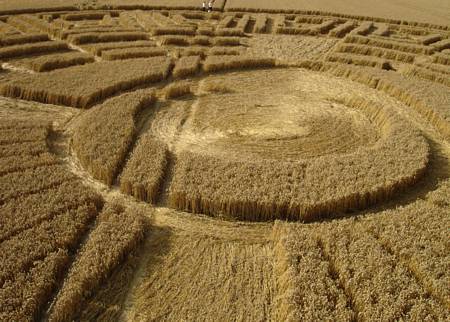
It is not worth trying to accurately describe the design, much easier in this case to look at a photo, but essentially the formation is circular, with an outer ring and central circle, surrounded by a complex pattern of laid and standing pathways. In the centre is a standing crescent, with two ‘fan-like’ shapes formed of narrow pathways and curved ends. The crop is laid in a predominantly clockwise direction, with some variation where there are pathways or square sections, in which the crop flows out towards the perimeter of the design, or across the main flow as can be seen in the image below. 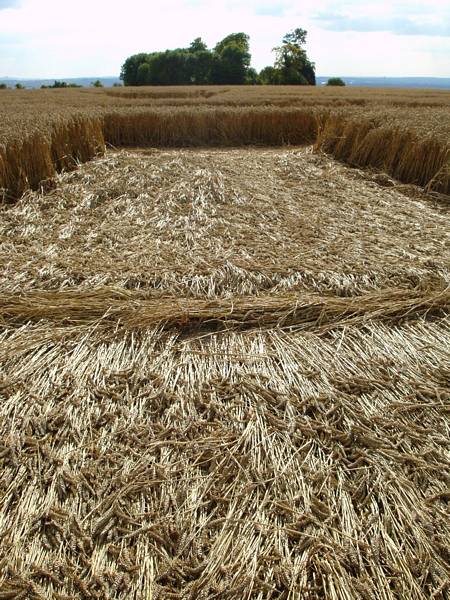
In many places there are pathways underneath the main flow, where the crop has been laid in a different direction. Often these are a continuation of the edge of an adjacent pathway, occurring as one section of laid crop meets another. 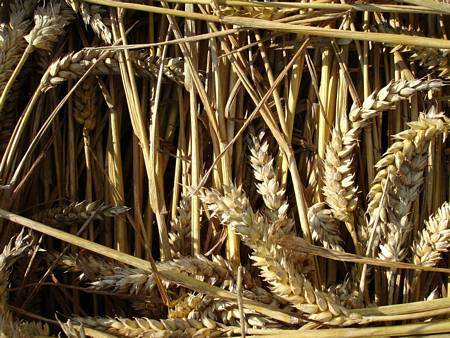
The narrow pathways which make up the ‘fan’ shapes in the centre of the design flow in alternate directions. At the end of each section the crop flows round in a tight curve to enter or meet the crop in the next pathway. Where crop flowing in opposite directions meets, the lay is generally fairly neat. 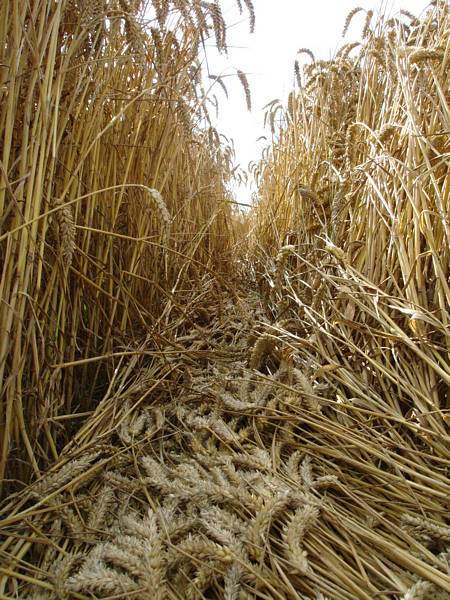
Where the crop flows around the ends of these standing sections, some of the crop in the main clockwise flow appears to follow the curve before continuing its course. The lay is generally neat. 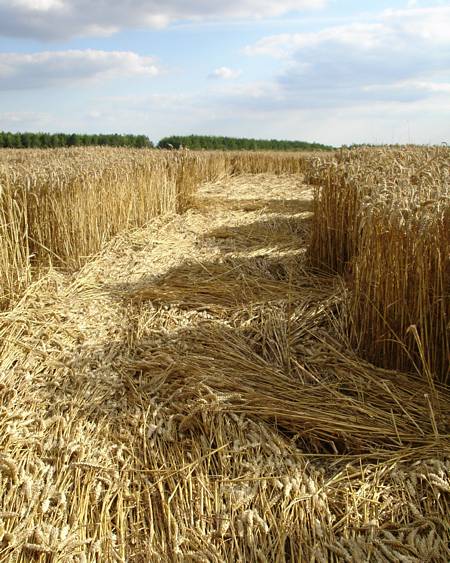
In some of the wider pathways there appears to be a slightly raised section in the centre, like in the Ridgeway formation. Here the crop is a little less compacted. This only occurs in some sections of the crop circle and is not particularly prominent. 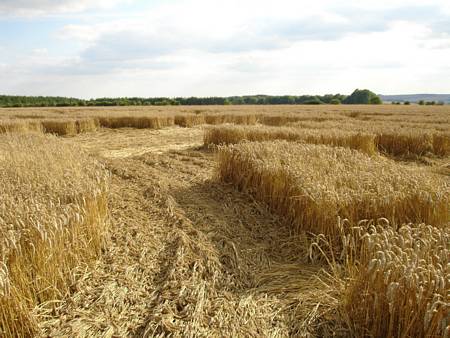
Considering the amount of visitors to the formation before I had a chance to get there myself, the condition of the laid crop inside was very good. Clearly there was damage to the laid stems in many areas, but there were also sections where the crop seemed to be untouched, and certainly not crushed or squashed. Particularly impressive are the standing tufts and swirls in each of the outer square sections of the formation. The crop here flows elegantly around generally large bunches of standing stems. There appears to be little damage to either the standing or laid crop. The stems surrounding each tuft seem to have been laid very lightly, and as a result, are slightly raised off the ground, rather than being well compacted. 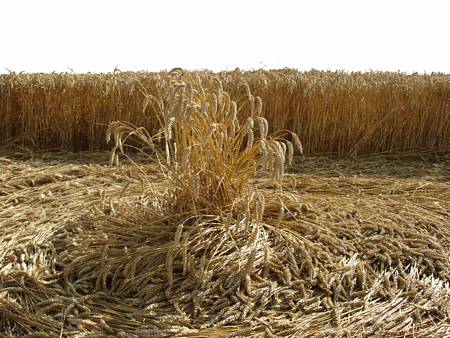
The ‘atmosphere’ inside this formation was particularly calm, and made for a thoroughly pleasurable experience. Maybe there is still time for a few more like this before the harvest… 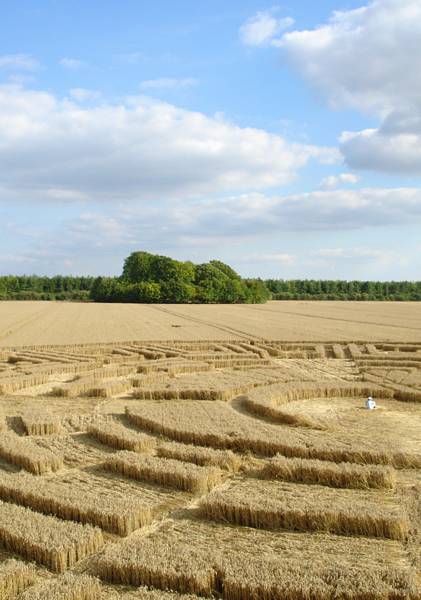
Crop Circle Summary
Alternative Websites |

